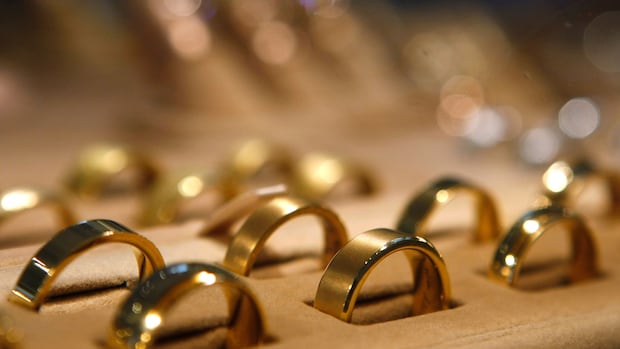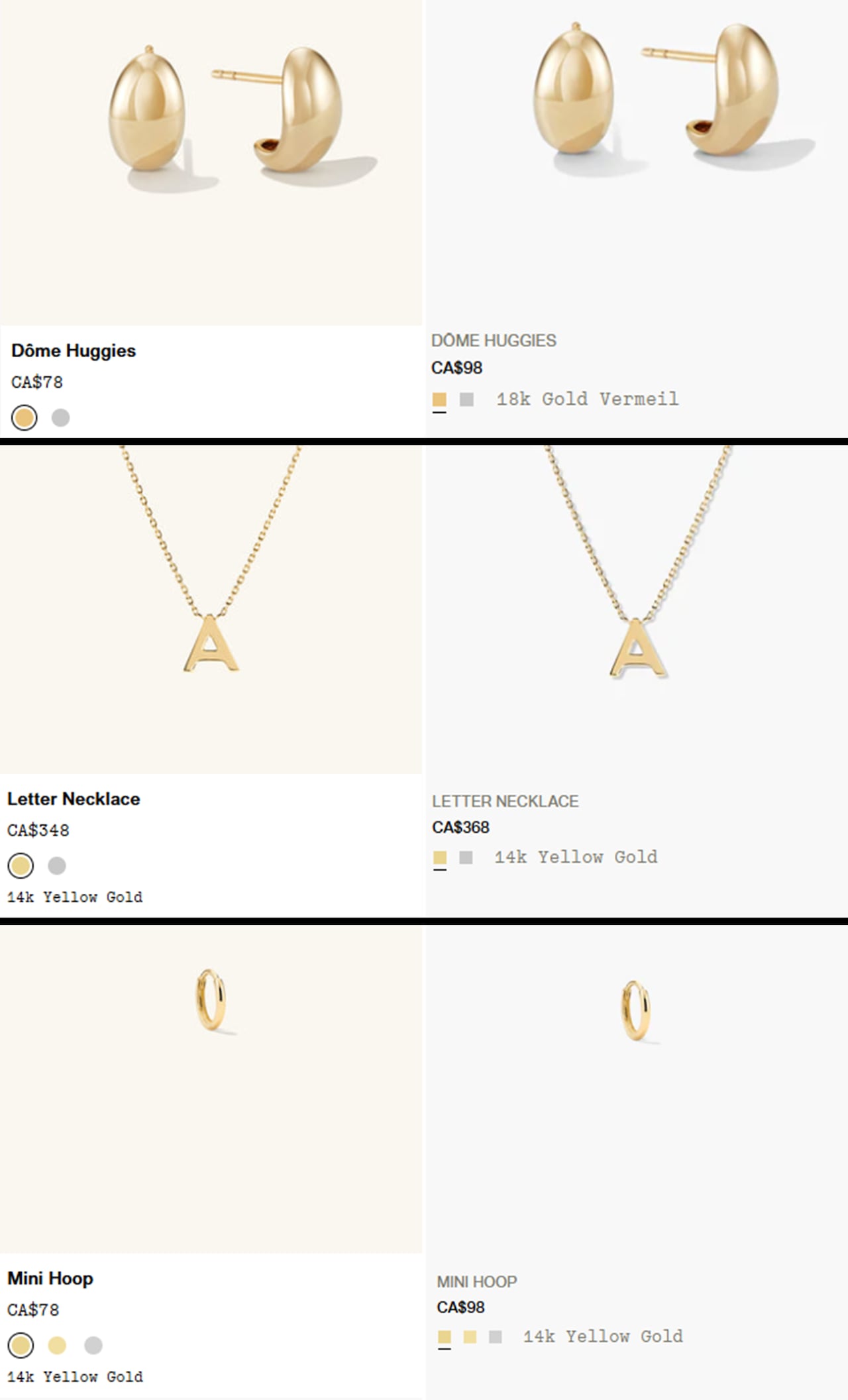As gold prices surge, some popular Canadian jewelry brands are increasing their prices

Some Canadian jewelry brands are raising their prices as a surge in demand for gold — incited by investors' fears of a shaky economic outlook — pushes the market for this precious metal to record highs.
With confidence in the U.S. dollar eroding, and uncertainty weighing on the global economy, more investors are looking for a safe place to park their money. So they’ve been buying gold in droves, sending market prices soaring for jewelry makers who might then pass the extra cost to their customers.
“There are certain products that we’ve already had to increase the pricing on,” said Melanie Auld, the Vancouver-based jewelry designer whose eponymous online business makes gold-plated jewelry with a sterling silver base.
Gold prices have surged as high as $4,300 US per troy ounce (the measurement used when weighing precious metals) in recent weeks after years of gradual growth. Auld said silver prices are also shooting up — and the combination isn’t sustainable for her business.
“We're seeing both of the main materials that we use increasing drastically, and I think it's severely affecting jewelry designers and then the consumer base in turn,” she explained.
The company is now offering less fine jewelry — which customers were increasingly turning away from due to its higher cost, says Auld — and focusing on moderately priced materials like wood, leather and stone to make the chunkier statement jewelry that is now on-trend.
“I think that there is always a way to utilize other materials and be creative with your designs,” said Auld. She doesn’t foresee gold prices coming back down.


Another well-known Canadian jewelry brand recently raised its prices to account for higher gold costs.
Toronto jewelry retailer Mejuri, which became popular for selling rings, earrings and necklaces at relatively accessible prices, emailed its customers last month to inform them of an increase.
The jump in gold and silver prices “have raised our costs,” Mejuri co-founder and CEO Noura Sakkijha wrote in the email. The company will be “streamlining our supply chain, strengthening sourcing, and designing with pricing in mind,” she added.
The company raised prices on Sept. 29, including for several of its bestsellers. A comparison of prices between Aug. 3 and Oct. 17, taken from the Wayback Machine, shows the difference.
For example, the brand’s letter necklace, which originally retailed at $348, now goes for $368; its 14 karat yellow gold mini hoops and 18 karat gold dome huggie earrings were $78, and both now cost $98.
Meanwhile, big American jewelry retailers like Signet, Pandora and Tiffany & Co. are expected to hike their prices or shift their manufacturing strategy by the end of the year, if they haven’t already, according to analysts.
Other jewelry brands are taking a different approach for the time being. Toronto-based online retailer Jenny Bird is relying on supplier discounts and strategically-timed shipments to manage higher costs, according to Priti Kapoor, the company’s chief operating officer.
“We're more focused on keeping the jewelry as is, the material as is, and focusing on other ways in our supply chain and in our operating expenses to shave costs to keep our profitability strong,” Kapoor told CBC News.
She added that she’s confident Jenny Bird will be able to withstand higher gold costs. “But I do worry about a lot of businesses because it is the highest it has been in a very long time.”
Reena Ahluwalia, a jewelry designer based in Toronto, said she’s looking for different ways to manage costs — including using lighter-weight gold and studding her designs with coloured stones.
The demand for gold isn’t going away, and the industry needs to adapt accordingly, she said. But not everyone in the jewelry market is feeling the pressure equally.
“What we are seeing is that in the higher-end luxury jewelry market, they're able to absorb the price hike,” she said. “But it's the mass market and wholesalers who are feeling the squeeze.”
'It's sort of like fire insurance'Gold has long been considered a safe asset during periods of economic instability. The pricing surge began towards the end of summer, but it had been on an upward incline for most of the year as U.S. President Donald Trump began imposing his tariff regime globally.
“It's sort of like fire insurance. You don't hope for your house to burn down, but you certainly want to have some insurance. And gold is a hedge against a lot of the uncertainties that we have out there,” said John Ing, president and CEO of Maison Placements Canada, an investment banking firm in Toronto.

Most institutional investors watch gold futures, which are agreements to buy or sell assets at a set price in the future. That part of the investment market can influence the current price — also known as the spot price — for actual gold, making it a more expensive purchase for jewellers.
“It impacts the factory that we're purchasing from because their costs have gone up. And they need to make sure that they're still making the same money that they made yesterday and the day before,” said Kapoor. That’s how costs get passed onto businesses, and then consumers.
Plus, gold is a finite metal — and for the last few years, central banks have been buying it en masse, eating up a chunk of production. The jewelry market takes another slice of that pie; and retail investors are also buying gold-related assets through exchange-traded funds, said Ing.
“So there's a lot of uncertainty, and there's not that much gold mining going on. In fact, gold reached peak production two years ago,” he said. Like Auld, he doesn’t see costs coming down.
“Historically, these are the ingredients for much higher prices.”
cbc.ca





